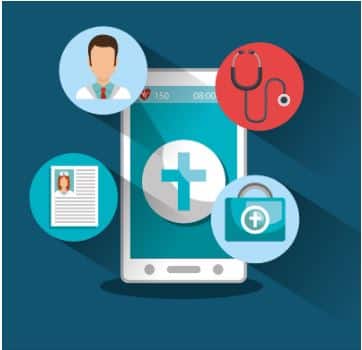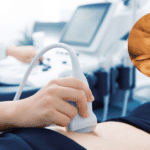Medical Equipment Repair: Training for Reliability

Did you know that the lifespan of medical equipment is reduced by approximately 80% due to improper maintenance and inexperienced operators? The result? Constant replacement costs, inoperability, and patient care delay. When the operators aren’t well-versed in minor repair and service requirements, they need to wait for the experts to arrive. Till then, the diagnosis is paused, and patients cannot be attended to.
Therefore, it is crucial that the clinicians are well-versed in medical equipment repair so they don’t struggle with downtime. With patient safety at stake, adequate staff training helps improve functionality and reduce dependency.
Let’s explore how staff training in medical equipment repair helps boost operational efficiency. This blog also discusses the role of technological advancement and the global support network in ensuring effective repair and maintenance practices.
Innovation in Service & Maintenance
An advancement in technology offers an opportunity to quickly diagnose the problem, solve it, and prevent costly repairs. Below are some of the innovative solutions incorporated by the healthcare units to ensure their equipment delivers uninterrupted and efficient performance:
Advanced Diagnostic Tools
AI continuously monitors how medical devices perform, and analyzing this data helps predict whether maintenance is due. When trainers learn how to use calibration instruments and specialized software, they can assess component health and overall performance. It also helps ascertain the possibility of a defect and carry out the preventive measures thereafter.
Predictive Maintenance
The use of cutting-edge AI and machine learning technologies helps anticipate equipment faults and failures. The use of real-time data analysis helps service components before they begin hampering the operations.
AR Support
Augmented reality has changed how healthcare equipment is repaired and serviced. Its distant virtual guidance helps seek expert support in repairing and servicing broken devices and their components. The simulations are used to visualize internal components and troubleshoot step-by-step for accuracy.
Key Applications in Healthcare
Training in medical equipment repair helps ensure timely servicing, diagnostic accuracy, and patient care. Every department in a hospital and private clinic benefits from a trained workforce that can troubleshoot problems on its own. Here are the key applications where specialized training helps:
Imaging
Equipment like the MRI, CT, and X-ray machines is required for modern diagnosis. Specialized training programs help clinicians understand how to identify and solve electrical, software, and mechanical problems.
Monitoring
Monitoring devices like ECG, oximeter, blood pressure machine, and glucometer need to perform uninterruptedly for accurate reporting. The hospital staff can repair minor issues and perform preventive maintenance to eliminate false readings and data loss. It helps make better clinical decisions for the patients.
Surgical
In a surgical environment, training involves calibration of power instruments, sterilizers, and electrosurgical units. Once technicians are well-versed with safety checks and compliance, they can use the tools without risking patient health.
Laboratory Device Servicing
Instruments like incubators, centrifuges, and analyzers require constant servicing for accurate test results. Medical equipment repair training helps identify early signs of wear and tear and perform software updates for quality assurance. It also helps ensure that your devices are compliant with any new regulatory standards.
User-Friendly and Reliable Performance
Focusing on staff training helps ensure that complex problems can also be solved effectively. Here are some of the factors that support clinicians in repairing equipment and maintaining patient reliability:
Rapid Fault Detection
Advanced detection tools help the medical staff identify the problems instantly. Their system can analyze error codes and highlight potential issues before they escalate. This quick identification mechanism helps staff take fast action and reduces downtime.
On-Demand Training
AI-powered tools and AR support make repairing quick and easy. Staff can connect with the experts or view old modules when the machine breaks down. It helps ensure quick repair without interrupting hospital workflow.
OEM Integration
The equipment’s performance depends heavily on whether the components are original or sourced from a third-party dealer. Training programs nowadays focus on OEM-specified repair techniques to meet the safety standards and performance benchmarks.
Cost-Effectiveness and ROI
If the in-house staff is trained effectively, they can resolve issues without depending on a third party. It not only saves time and boosts productivity but also turns out to be a cost-saving method for the hospital/clinic. Here’s how:
Reduced Service Costs
Training your hospital staff leads to financial advantages as you don’t have to wait for experts to address the technical issues. The reduced service charges and emergency extra charges help maintain your budget.
Longer Lifespan
Regular maintenance cycles by the in-house staff boost equipment efficiency and the lifeline. Preventative measures, timely repairs, and proper calibration help hospitals gain the maximum value from their investment.
Improved Throughput
Well-maintained machines result in quicker turnaround times and better patient productivity. You can attend to multiple cases every day without worrying about downtime. It helps in timely treatment and patient satisfaction.
Global Trust and Support Network
It is crucial to build a global support network to improve operational efficiency in the long run. Here’s why:
Certified Training
Access to a globally recognized training program helps follow standardized protocols for maintenance and repair. It helps align a hospital’s equipment to regulatory standards and maintain performance benchmarks.
Technical Support
Continuous tech assistance from in-house staff helps resolve issues quickly and prevent downtime. This support strengthens healthcare dependency, whether through guided training or remote diagnosis.
OEM Partnerships
It is imperative for a healthcare institute to partner with an OEM dealer that guarantees the supply of genuine parts. Such a partnership ensures that maintenance and repair are of the highest quality and can extend the reliability and longevity of the equipment.
Conclusion
Despite the many advantages of in-house training, you have to address certain challenges. These programs require time and investment, making it imperative to choose the training partner carefully. You must partner with a team that offers specialized training and repair services to meet your hospital’s requirements.
Ultravision Medical brings its expert medical equipment repair team that helps keep your facility running and reduces downtime. Its comprehensive solutions cover diverse needs and are helpful in improving a hospital/clinic’s functioning. So, whether you require prompt repairing or an extensive technical training, the Ultravision team is always available at your service.




